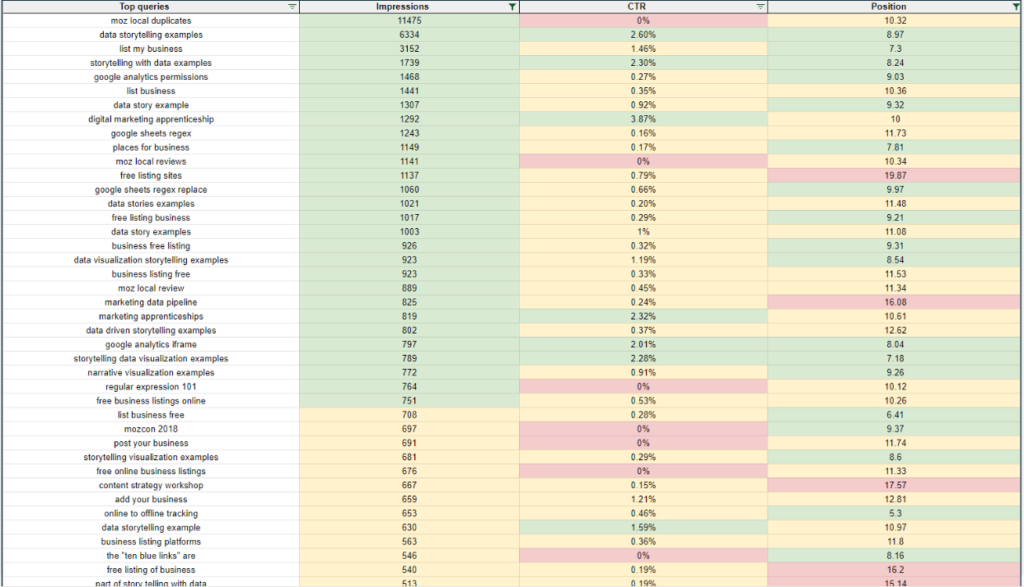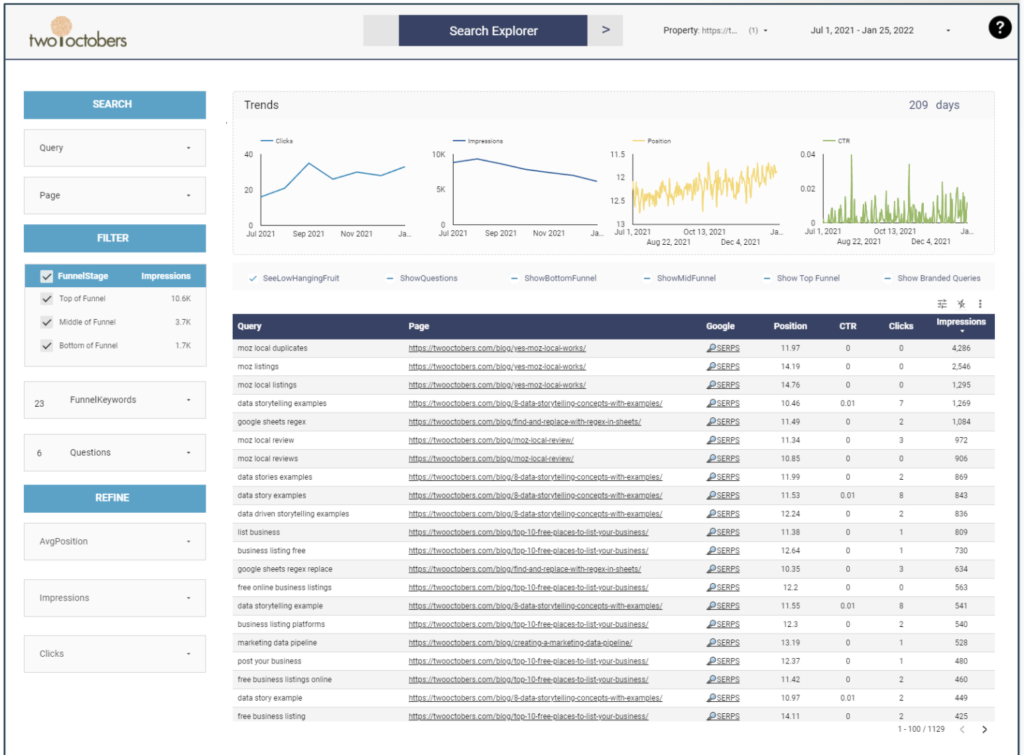What Is Low-Hanging Fruit in SEO?
I bet you didn’t know that you’re just around the corner from greatness with your SEO program. No, really. You are. I’m going to share some tips with you today that are going to change your SEO game and help keep your brand competitive.
Let’s start with a definition that I’m using in this post to make sure we’re on the same page.
Low-Hanging Fruit in SEO terminology:
The definition of “Low-Hanging Fruit” may vary slightly between SEO’s, but generally “Low-Hanging Fruit” means keywords which are almost optimized.
These pages are hovering around success, but haven’t gotten the final push they need to make it to the strong keyword ranking that would open up lots more organic traffic to the website. The most important low-hanging fruit is at our business’s sweet spot for impression volume, funnel stage, business relevance or niche, and the competitive landscape.
How To Find Low-Hanging Fruit
You might be asking yourself: “Ok, well how do I find and harvest my low-hanging SEO fruit?” We recommend starting with organic search query data that’s found in Google Search Console (GSC). As you parse through the data, consider the following parameters together to uncover your fruit: impression volume, CTR (click through rate) and search page position (rank).
1. Impression Volume Filtering
Impression volume indicates the number of times your website has appeared in search results when a particular keyword was searched. Often times, high volume will be high funnel, so make sure you set a minimum and utilize conditional formatting or filters. Keep in mind the impressions step is the potential for the keyword – i.e. how much traffic your site could be capturing.
2. Clickthrough Rate Filtering
CTR is essential because it captures the number of times your webpage was clicked on, divided by the number of times it appeared in search results. This is a ranking factor in organic results, so optimize! It’s an important signal because it shows the actual or realized value of the keyword for your site – i.e. how often users actually choose your site.
3. Position (or Ranking) Filtering
Lastly, search page position or rank is the reason for being – A.K.A. why we do SEO. This is Google’s rating of your webpage versus other pages in the index.
As you review this, keep in mind that: Anything below position 9 is beyond page 1, results on page 1 perform significantly better than subsequent pages, and lastly, position shows the perceived authority of your page (e.g. how well your page stacks up to competition for the same search).
An Example of How to Find Low-Hanging Fruit for SEO

Here’s an example of how to do this with ease, using Google Search Console (GSC):
- Export the top 1,000 rows from GSC
- Set impression range > 250
- Filter position for 5-20
- Repeat: filter for “denver” and repeat
Note: The data shown in the sheet as an example utilizes conditional formatting to accomplish a similar effect by setting high, low, and mid values for each metric. Combining the two methods described here will lead to even more specific results and insights.
An Example of finding Low-Hanging Fruit using Branch Explorer
If you want to do this in an even easier way, use Branch Explorer, built for quick retrieval of your most important GSC data without struggling. Branch Explorer can show you millions of rows of GSC data, blowing open a world of long-tail data for exploration.

Here’s how this would work in Branch Explorer:
- Click the “Low-Hanging Fruit” checkbox on any tab which includes it.
- This will filter all of the data on that tab to look specifically for queries ranking within the position 5 – 20 range.
Optional Steps in TO Explorer for Additional Insights
- Navigate to any of the following tabs of the dashboard to find further, deeper insights in combination with the Low-Hanging Fruit filter;
-
- Topic Explorer
- Site Structure
- Trending Pages
- Funnel Stage Insights
- Filter query data by specific word inclusions with the Query Filter, or filter by page URL with the Page Filter.
- Layer any of the following filters, also available in the TO Explorer Dashboard;
-
- Show Branded Queries
- Show Bottom Funnel
- Show Mid Funnel
- Show Top Funnel
- Show Questions
- Utilize conditional formatting to highlight specific values or ranges of values.
- Easily change date ranges to parse time-sensitive data.
This will provide you easy data about which low-hanging fruit pages to optimize to improve rank. Quick, handy, easy, and a total game changer from digging around in GSC manually.
How to Address Low-Hanging Fruit Opportunities in SEO
Once you’ve identified those interesting keywords and ready-for-greatness pages, there are a dozen things you can do to try to help them improve ranking and get more traffic. Take a look at our blog post, Low-Hanging Fruit: 10 SEO Cheat Sheet Tips for Improving Traffic, or watch my webinar for some great ideas.
Questions, Comments, Or Concerns?
At Two Octobers, we love receiving feedback about our tools, processes, and work. If you have further questions, reach out to us! Feedback about ways in which a tool could be improved? Reach out to us! Comments about ways in which our tools or work have impacted your business? Reach out to us (or better yet; leave us a review).




